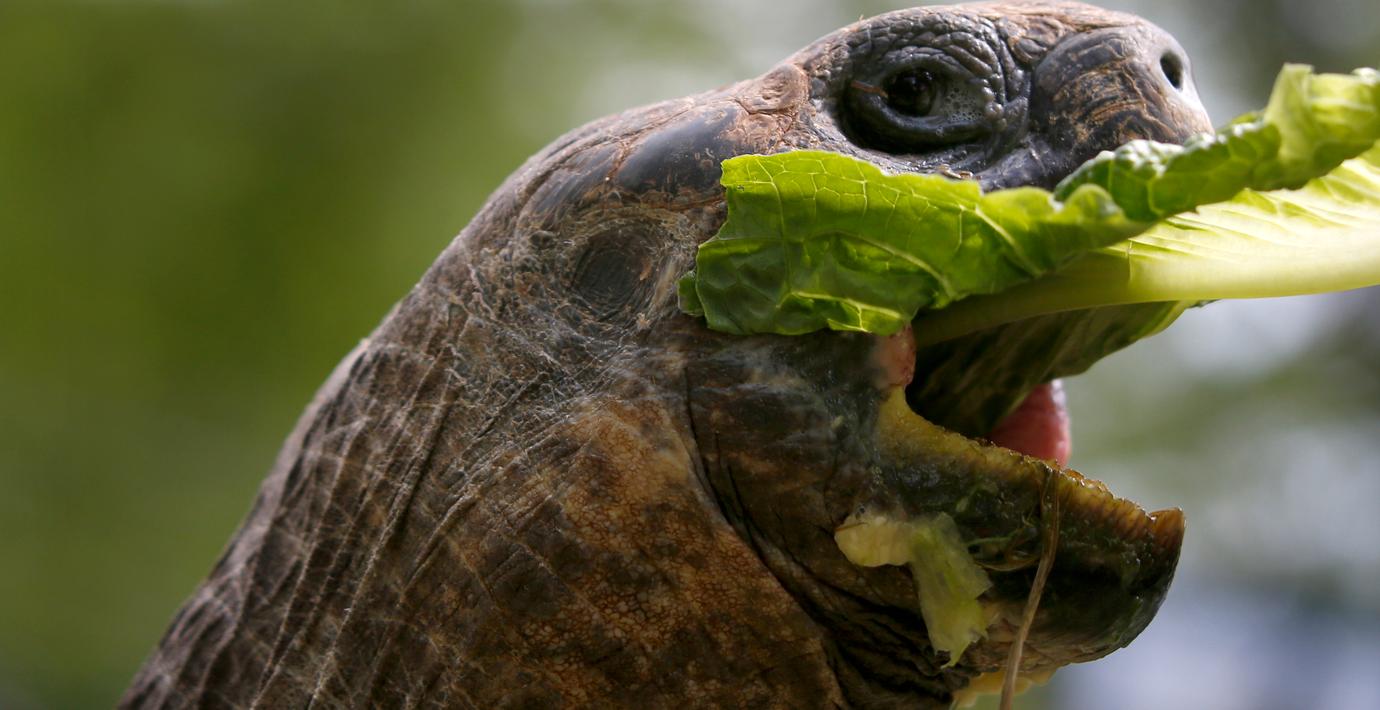
Sextokige Diego räddade sin art: Nu går han i pension
Att landsköldpaddan Diego är så exceptionellt motiverad att fortplanta sig pekas ut som anledningen till att arten räddats på Galápagosöarna, skriver CNN.
Nu får den sexuellt överentusiastiska hannen återvända till det vilda och gå i pension.
Diego har varit en del av ett avelsprogram på Santa Cruz. När det inleddes på 1960-talet fanns bara ett fåtal landsköldpaddor kvar. Nu finns det fler än 2 000 individer som ska placeras ut. Diegos libido tillskrivs äran för omkring 40 procent av populationen.
bakgrund
Landsköldpaddor på Galapagos
Wikipedia (en)
The tortoise complex or Galápagos giant tortoise complex (Chelonoidis nigra and related species) are the largest living species of tortoise. Modern Galápagos tortoises can weigh up to 417 kg (919 lb). Today, giant tortoises exist on only two remote archipelagos: the Galápagos Islands 1000 km due west of mainland Ecuador; and Aldabrachelys gigantea of Aldabra in the Indian Ocean, 700 km east of Tanzania.
The Galápagos tortoises are native to seven of the Galápagos Islands, a volcanic archipelago about 1,000 km (620 mi) west of the Ecuadorian mainland. With lifespans in the wild of over 100 years, it is one of the longest-lived vertebrates. A captive individual lived at least 170 years. Spanish explorers, who discovered the islands in the 16th century, named them after the Spanish galápago, meaning "tortoise".Shell size and shape vary between populations. On islands with humid highlands, the tortoises are larger, with domed shells and short necks; on islands with dry lowlands, the tortoises are smaller, with "saddleback" shells and long necks. Charles Darwin's observations of these differences on the second voyage of the Beagle in 1835, contributed to the development of his theory of evolution.
Tortoise numbers declined from over 250,000 in the 16th century to a low of around 3,000 in the 1970s. This decline was caused by overexploitation of the species for meat and oil, habitat clearance for agriculture, and introduction of non-native animals to the islands, such as rats, goats, and pigs. The extinction of most giant tortoise lineages is thought to have also been caused by predation by humans or human ancestors, as the tortoises themselves have no natural predators. Tortoise populations on at least three islands have become extinct in historical times due to human activities. Specimens of these extinct taxa exist in several museums and also are being subjected to DNA analysis. 10 species of the original 15 survive in the wild; an 11th species (Chelonoidis abingdonii) had only a single known living individual, kept in captivity and nicknamed Lonesome George until his death in June 2012. Conservation efforts, beginning in the 20th century, have resulted in thousands of captive-bred juveniles being released onto their ancestral home islands, and the total number of the species is estimated to have exceeded 19,000 at the start of the 21st century. Despite this rebound, all surviving species are classified as "threatened" by the International Union for Conservation of Nature.
Omni är politiskt obundna och oberoende. Vi strävar efter att ge fler perspektiv på nyheterna. Har du frågor eller synpunkter kring vår rapportering? Kontakta redaktionen